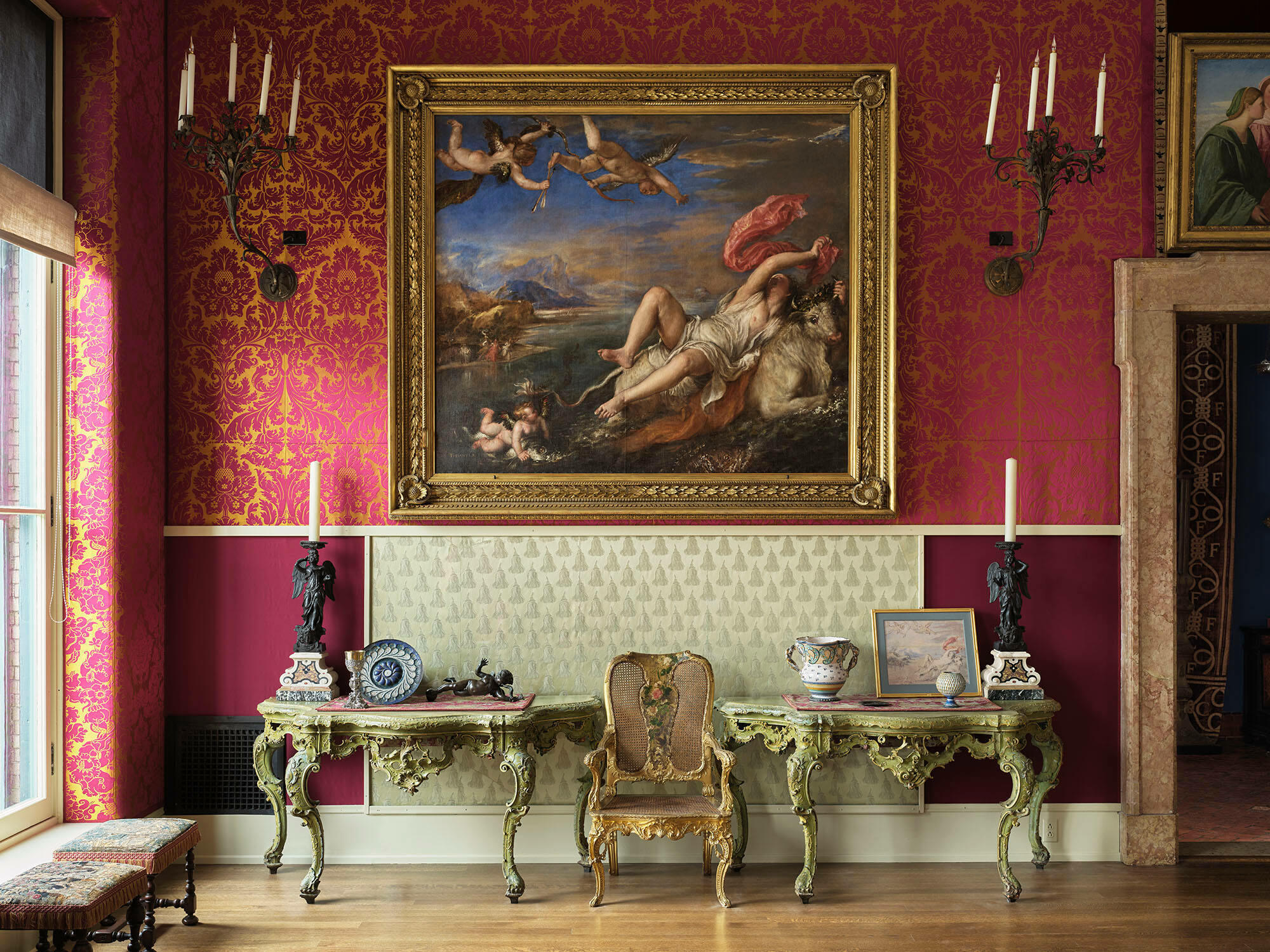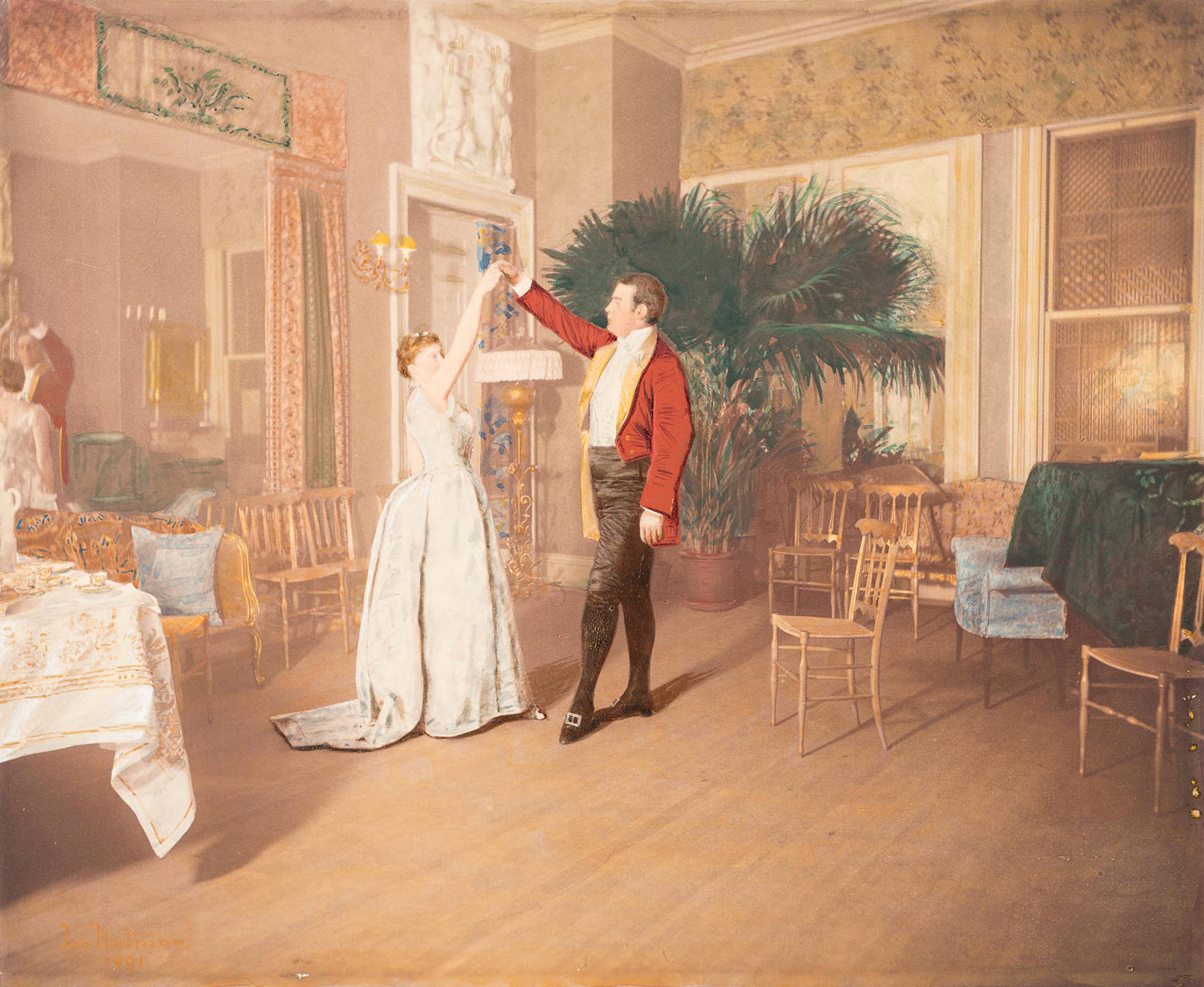General admission for children 17 years and under is always free
Isabella Stewart Gardner was captivated by the stories of tragic heroines. Her deep interest in opera and her genealogical fascination with Mary, Queen of Scots are evidence of this. Another tragic heroine who captured the imagination of Isabella Stewart Gardner was Marie Antoinette, the last queen of France. Gardner’s interest in Marie Antoinette and the last decades of royal France was expressed through her collecting habits, as well as through some choices in her clothing.
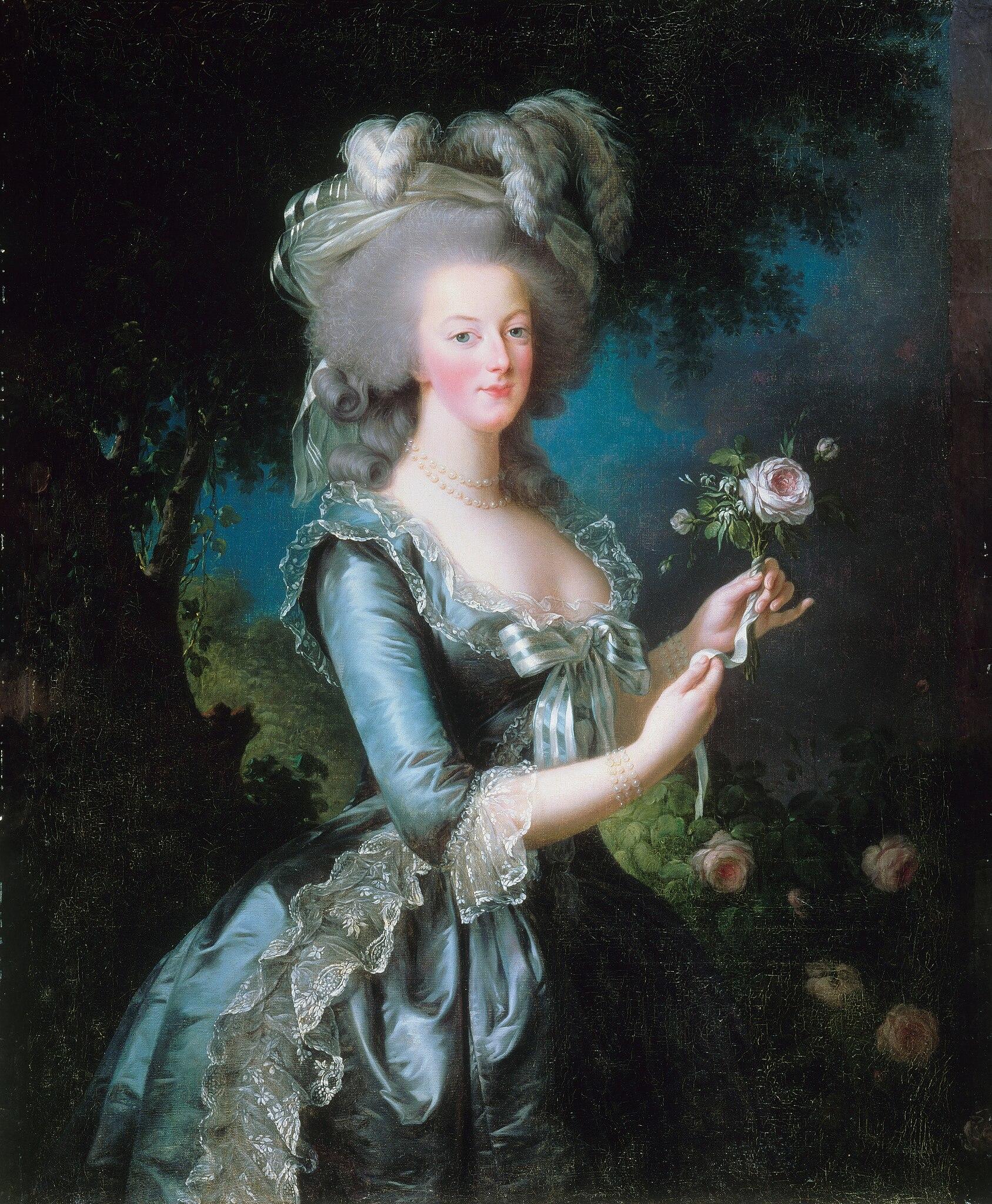
Palace of Versailles
Élisabeth Louise Vigée Le Brun (French, 1755–1842), Marie-Antoinette with a Rose, 1783. Oil on canvas, 130 x 87 cm (51 x 34 1/4 in.)
Who Was Marie Antoinette?
Marie Antoinette was born in the Hofburg Palace in Vienna on 2 November 1755. The youngest daughter of Empress Maria Theresa, she journeyed to the court of France at Versailles at the age of 15 to marry the Dauphin, or crown prince, of France, who would be crowned as Louis XVI in 1774. The couple had four children, three of whom survived infancy. Marie Antoinette was known as a fashionable trendsetter, popularizing tall pouf hairstyles and new, extravagant forms of dress.
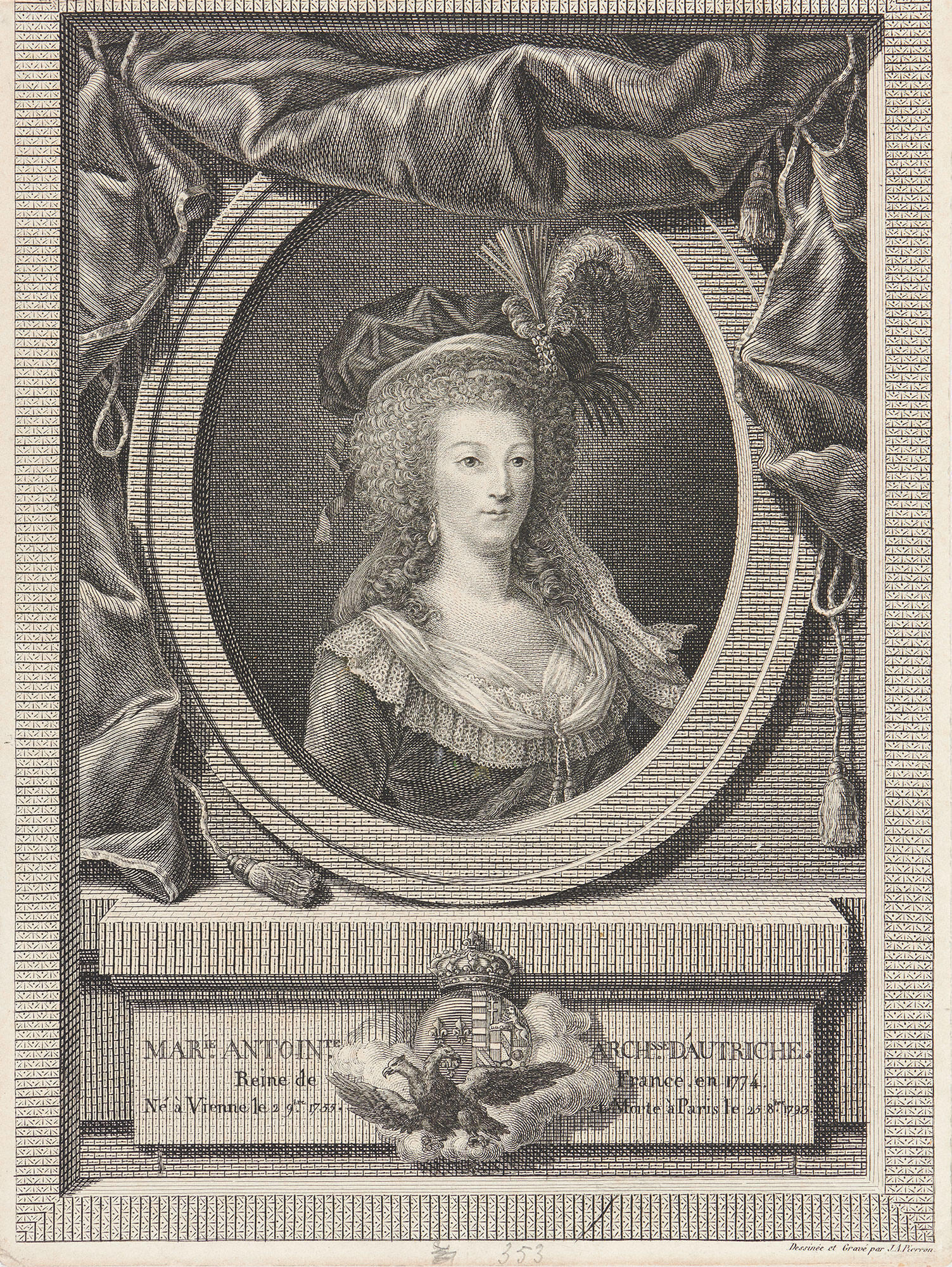
Isabella Stewart Gardner Museum, Boston (P27w576.1). See it in the Royal Autograph Case in the Long Gallery
The royal couple spent recklessly and became increasingly unpopular with the people of France who were then burdened with issues including famine, inflation, and increasing taxes. The revolutionary pot eventually boiled over, and some months after the storming of the Bastille on 14 July 1789, the aggrieved population marched on Versailles and forced the royal family into house arrest in Paris. Marie Antoinette and her family attempted to escape France, but were quickly captured and returned to Paris, where they faced treason charges. The monarchy was fully abolished, and Louis XVI and Marie Antoinette were executed by guillotine in 1793.
Isabella and Marie Antoinette
Like many women of her time, Isabella Stewart Gardner was fascinated by the tragic story of Marie Antoinette and the accompanying aesthetics and history of eighteenth-century France. The Little Salon, a room on the second floor of the Museum’s historic building, captures the international Rococo style that originated in France and influenced palaces like Versailles and Marie Antoinette’s retreat at the Petit Trianon. The room is outfitted with period furnishings and art.
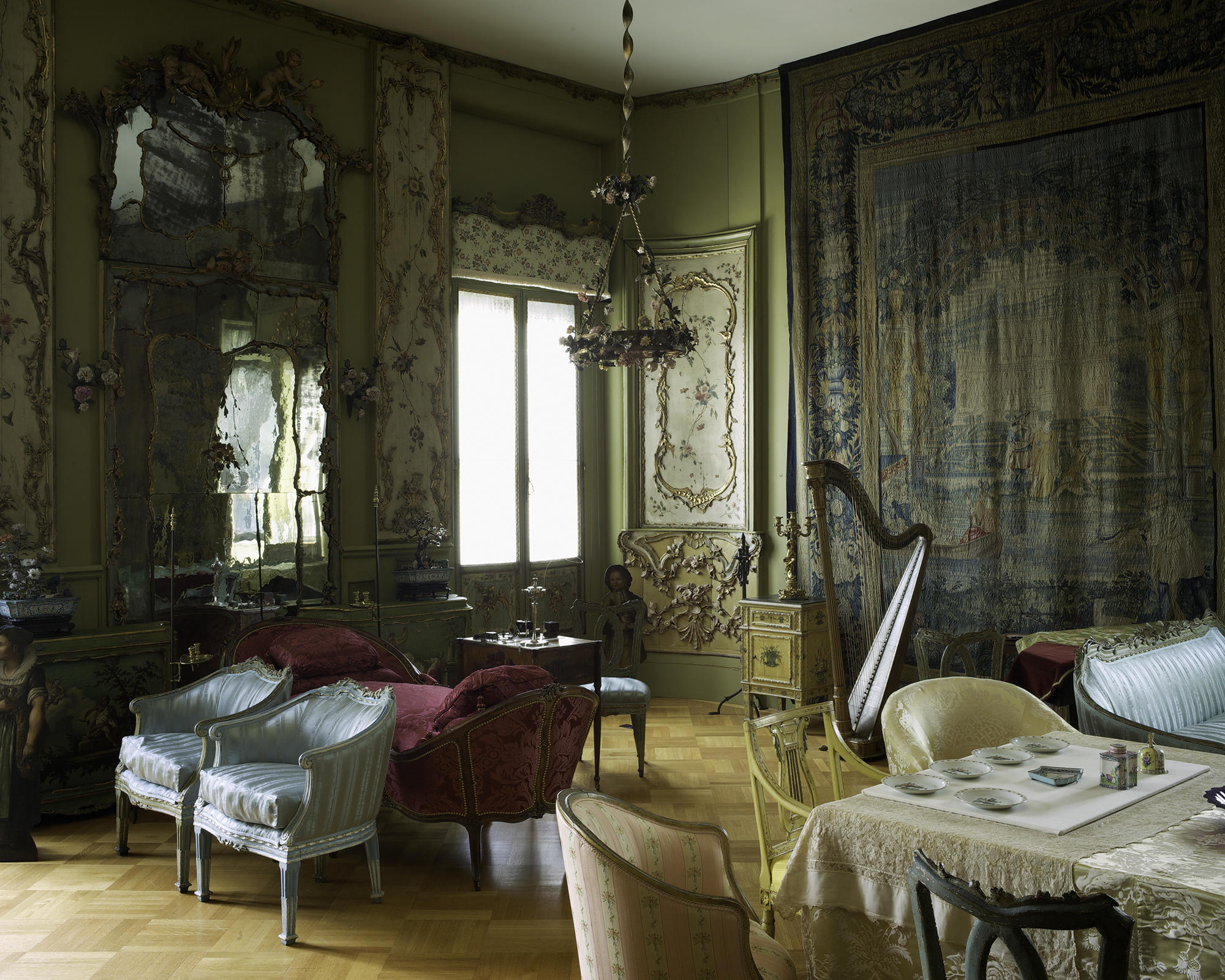
The Little Salon, Isabella Stewart Gardner Museum, Boston
Alongside these furnishings, Isabella Stewart Gardner also displayed a portrait of Marie Antoinette. This portrait miniature, painted in oil, was created in about 1786, and shows the queen as a young woman.
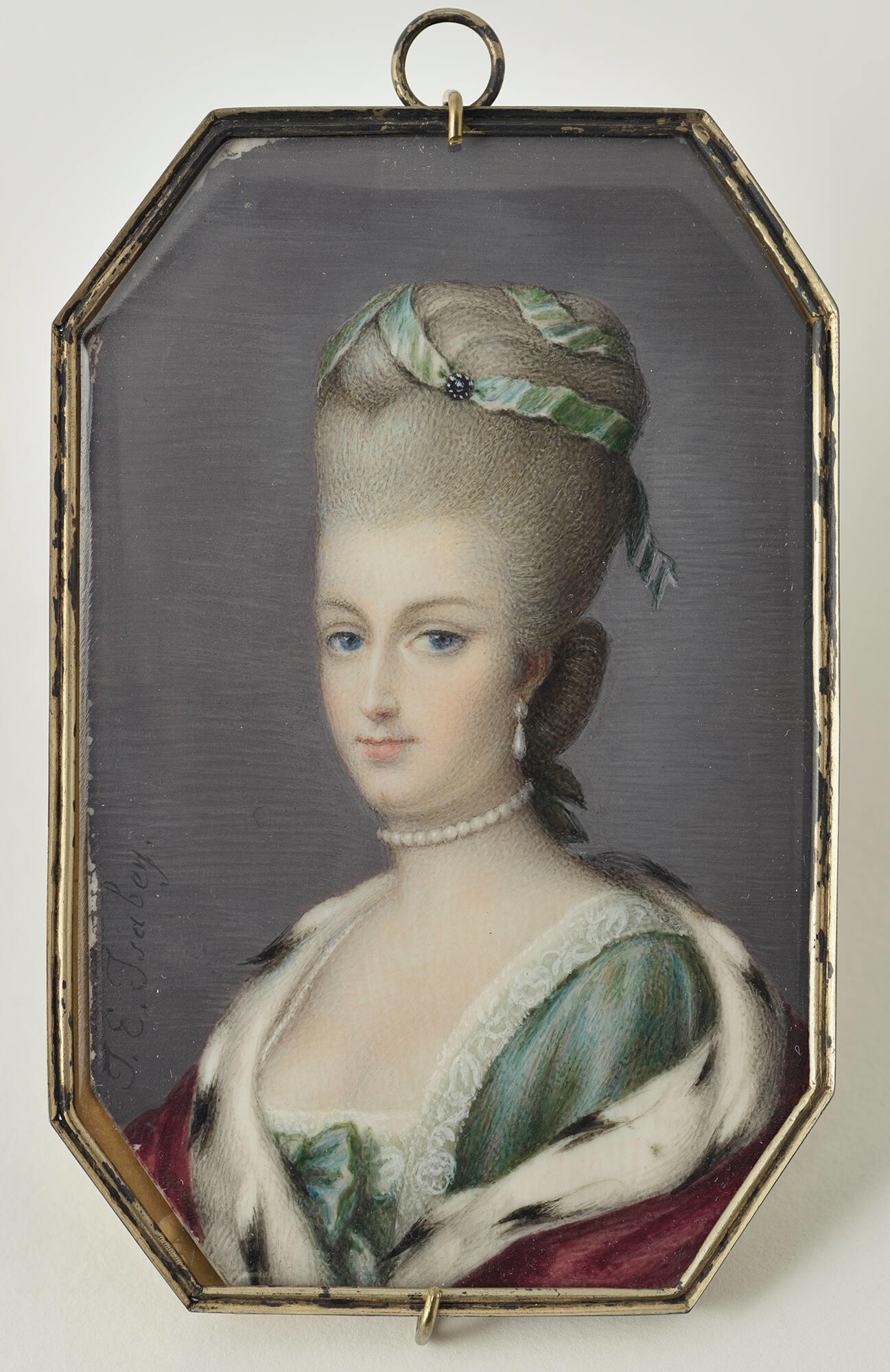
Isabella Stewart Gardner Museum, Boston (P18s24)
Jean-Baptiste Isabey (Nancy, 1767–1855, Paris), Miniature of Marie Antoinette, about 1786. Oil, 9 x 6 cm (3 9/16 x 2 3/8 in.)
More objects related to Marie Antoinette are displayed in the Long Gallery, one floor up from the Little Salon. Here, in the Royal Autographs Case, are engraved portraits of Marie Antoinette, as well as her husband, King Louis XVI. These portraits are surrounded by other royal memorabilia, including a receipt for the payment of servants, bearing the signature of Marie Antoinette.
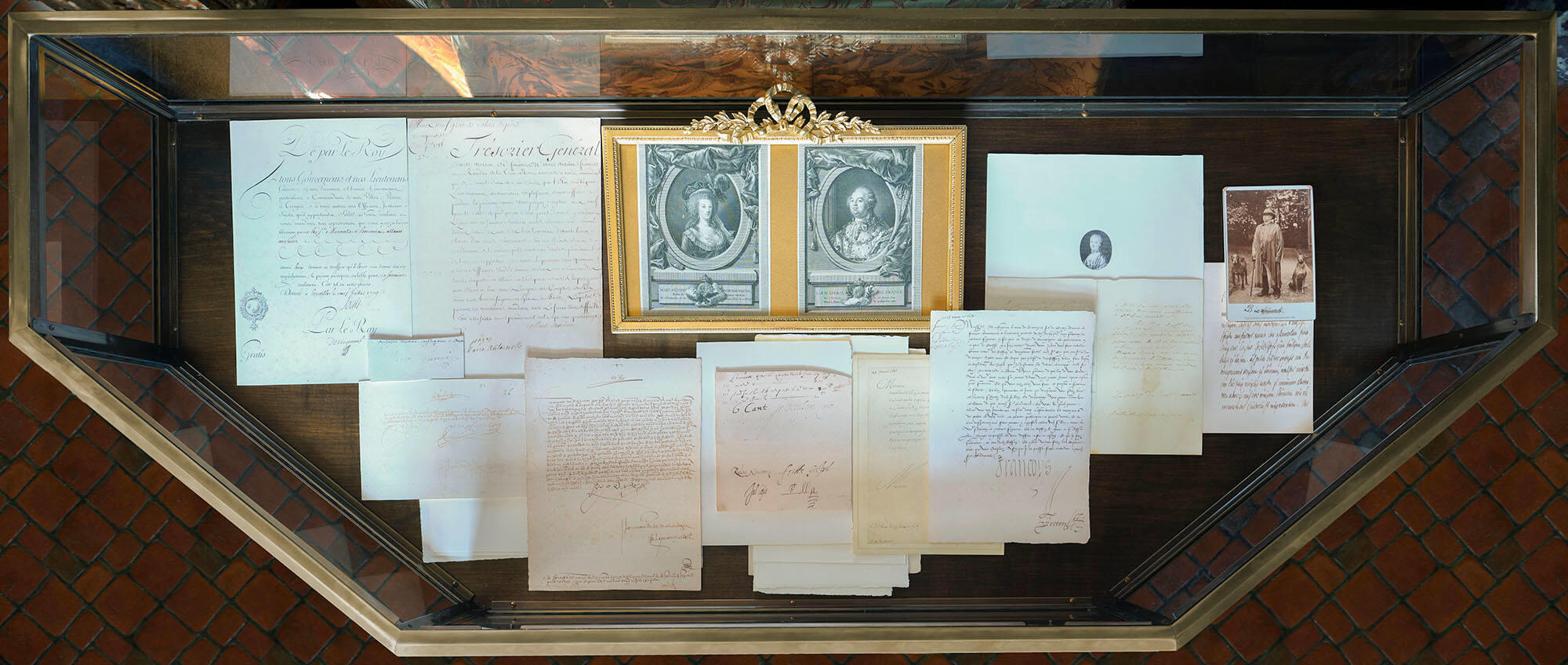
Photo: Sean Dungan
Marie Antoinette and the Ancien Regime also influenced Isabella Stewart Gardner’s fashion choices. Not much of Isabella’s clothing is still intact, but one of the articles of clothing that remains shows Isabella’s interest in the past. A deep purple velvet garment known as an ‘opera coat’ is now owned by the Peabody Essex Museum in Salem. This garment resembles a redingote, an 18th-century womens’ garment worn to ride horses—or to look like you did. Marie Antoinette was an accomplished horsewoman, and she was known to wear mens’ breeches and riding coats when she went out on horseback. Isabella Stewart Gardner also had an affinity for horses, and she may have contemplated this connection when she wore this coat!
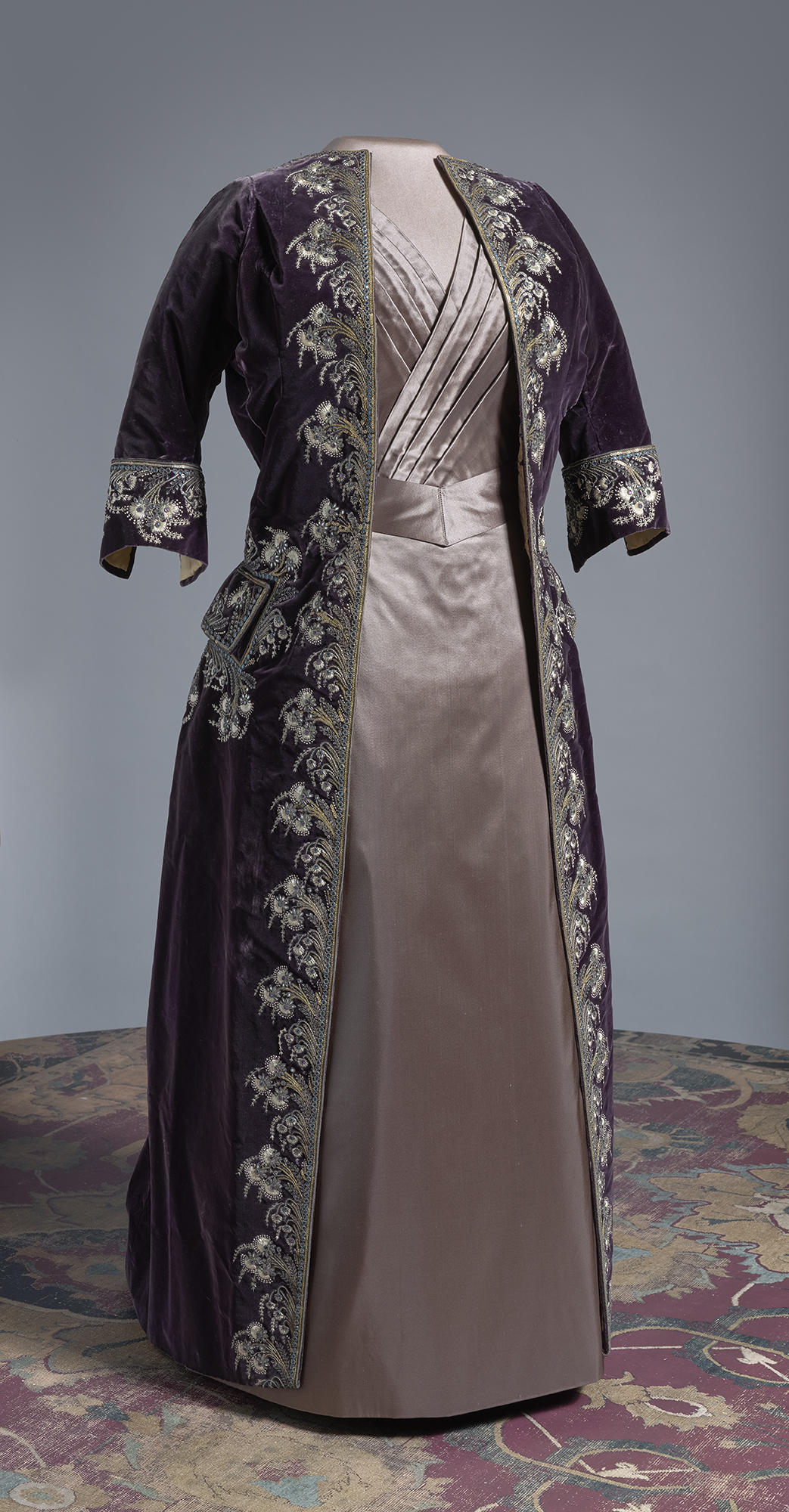
Peabody Essex Museum, Gift of Isabella Stewart Gardner, 1923
Isabella Stewart Gardner’s opera coat was created by the House of Worth. An Englishman with a shop in Paris, Charles Frederick Worth’s designs were wildly popular with wealthy women from both Europe and the United States. Isabella patronized the House of Worth for over thirty years and only engaged another fashion designer after the death of its founder in 1895. She even decorated the Museum with Worth’s designs; on the wall underneath the Rape of Europa in the Titian Room, Isabella displayed a panel of fabric from a Worth-created gown. There is even a photograph of Isabella wearing this dress, with its tasseled pattern on full display.
Interestingly, Worth made Marie Antoinette-inspired garments for other patrons, too. One of Worth’s most prolific clients, Empress Eugénie of France, was entranced by the legend of her tragic predecessor and occasionally dressed up in clothing reminiscent of that worn by Marie Antoinette, all designed and created by the House of Worth.
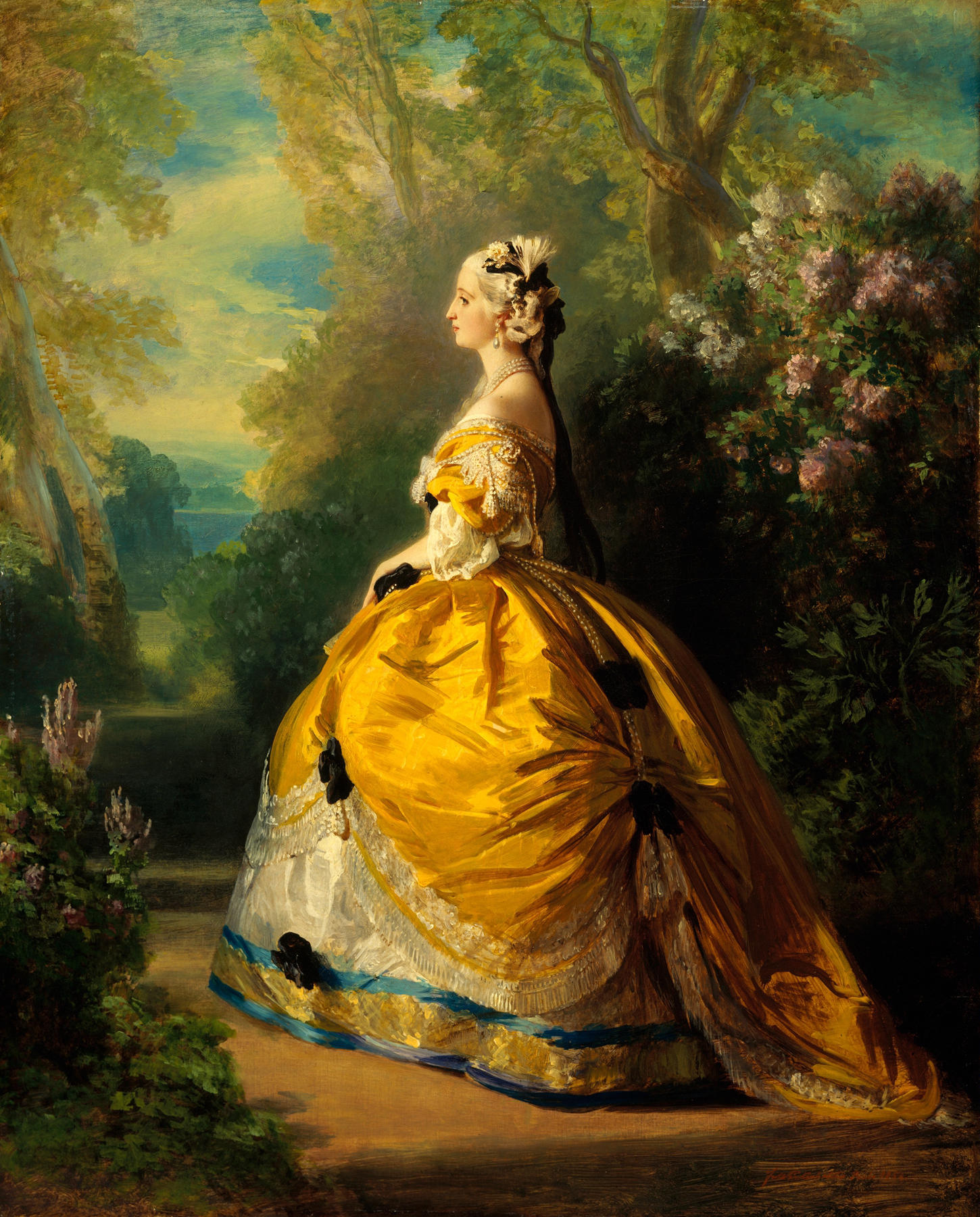
Metropolitan Museum of Art, New York (1978.403)
Franz Xavier Winterhalter (German, 1805–1873), The Empress Eugénie, 1854. Oil on canvas, 92.7 x 73.7 cm (36 1/2 x 29 in.)
Exploring Art History with Fabiola Jean-Louis
The image of Marie Antoinette remains alluring to contemporary history buffs and artists. Gardner Artist-in-Residence Fabiola Jean-Louis’ photography places Black women in settings and costumes that mirror the luxury and opulence of eighteenth-century France. These photographs center Black subjects and provoke questions about identity, status, and representation in the canon of western art history.
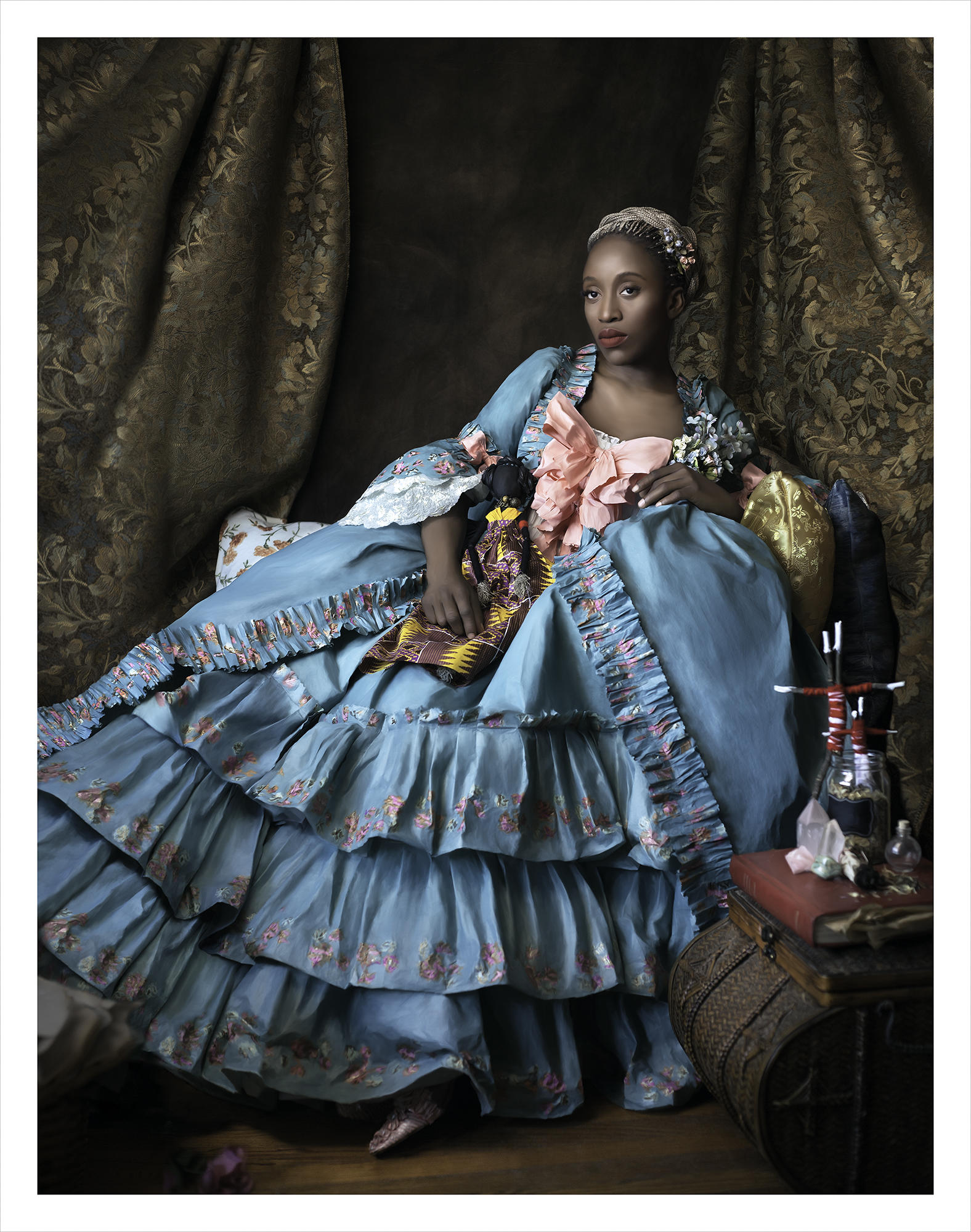
Image courtesy of the artist
Fabiola Jean-Louis (Haitian, b. 1978), Marie Antoinette is Dead, 2017. Archival pigment print, 60.96 x 78.74 cm (24 x 31 in.)
Fabiola’s Rewriting History will be displayed in the Fenway Gallery in the Gardner Museum’s Historic Building from October 19, 2023 through January 15, 2024.
